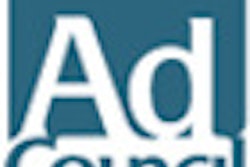
Many Americans delay treatment for oral health issues due to financial concerns or a lack of access to care. Consequently, preventable issues often become complicated ones before treatment takes place, and periapical abscesses are among them.
A retrospective analysis published in the Journal of Endodontics examined the trends of hospitalizations caused by periapical abscesses from 2000 through 2008 and found more than 61,000 cases and a growing problem (September 2013, Vol. 39:9, pp. 1104-1110).
"The number of hospitalizations attributed to periapical abscesses increased by 41%, from 5,575 in 2000 to 8,141 in 2008," the researchers wrote. The team, which included a private practitioner, a Tufts University dental student, and researchers from the Harvard School of Dental Medicine and Boston Children's Hospital, ruled out an increase in total hospitalizations as the cause, since that number only increased by 5%, from 37.9 million to 39.9 million, during the same time period. But they did state that "a lack of preventative dental care, dental treatment in a dental clinic setting, and oral health education must be considered."
To support their opinion, the researchers noted the 32% increase in emergency admissions for periapical abscesses during the same time as evidence that these patients had not been receiving routine oral care or delayed treatment until the issue was severe enough to compel them to go to the hospital.
Inadequate insurance is likely a factor, since access to care hinges on having dental insurance in the U.S., and as many as 25% of adults 65 and younger lack it, according to the Centers for Disease Control and Prevention's National Center for Health Statistics. Meanwhile, the burden on Medicaid to pay for discharges related to periapical abscesses has jumped 74%. Medicaid, in its current form, does not cover dental care for individuals older than age 21.
The researchers used additional data to peg the increase in hospitalizations for periapical abscesses.
"A study in Britain reported a 62% increase in patients requiring admission and operation for spreading odontogenic infections in the three years after the British government changed the system of payment to general practitioners, resulting in fewer government insurance-accepting dentists," they wrote (British Journal of Oral and Maxillofacial Surgery, January 2011, Vol. 49:1, pp. 26-28).
Rising hospital costs
A search for previous studies yielded only a "snapshot" of data regarding periapical abscess-related hospitalizations from the year 2007. Using the Nationwide Inpatient Sample (NIS) for the years 2000 to 2008, the researchers hoped to uncover longitudinal trends or associations between patient characteristics and hospitalization outcomes. The NIS is a massive inpatient care database, the largest in the U.S., with information on some 8 million hospital stays that took place in more than 1,000 hospitals.
"Its large sample size is ideal for developing national and regional estimates and enables analyses of rare conditions, uncommon treatments, and special populations," according to a summary by the Healthcare Cost and Utilization Project. It also includes considerable patient information, such as age, sex, race, primary reason for hospitalization, presence of comorbid conditions, discharge status, hospital length of stay, insurance status, and hospital charges, the researchers noted.
They selected all cases in which the primary reason for hospitalization had a corresponding diagnostic code for a periapical abscess or a periapical abscess with sinus involvement. Of the 61,439 hospitalizations, they found the following:
- The average patient age was 37.
- Regionally, 39% occurred in the South, 20% in the Northeast, 24% in the Midwest, and 17% in the West.
- 84% occurred in urban areas.
- 89% were an emergency or occurred on an urgent basis.
- The average hospital stay was nearly three days.
- 66 patients died while in the hospital.
Some of the most important data pertained to cost and payment. Patients used Medicare, Medicaid, private insurance, and other insurance plans to help pay for 19%, 25%, 33%, and 4% of all hospitalizations, respectively, at an average, inflation-adjusted hospital charge of $14,245 per visit. A significant portion of patients (19%) were uninsured.
Interestingly, 61% were white, 20% were black, 14% Hispanic, and 2% were Asian or Pacific Islander, but "whites incurred significantly less hospital charges than those of other races," the researchers noted. Teaching hospitals were associated with lower costs, and the Western region had significantly lower costs than the others.
There were significant predictors for a patient's length of stay, including age, race, insurance status, a periapical abscess with sinus involvement, geographic region of the country, hospital size, and the year of study (p < 0.05), the researchers explained. Patients likely had shorter hospital stays if they were white, had private insurance, and stayed in a small or medium hospital in any region except the South.
Over time, the geographic traits remained steady, as did the mean length of stay. However, the cost rose dramatically.
"Between 2000 and 2008, the total inflation-adjusted charges for hospitalizations increased 98.7%," the researchers wrote. The average cost per hospitalization included in the study increased by 36%, from $12,158 in the year 2000 to $16,521 in the year 2008.
The trends are indicative of improvements that must be made to the U.S. healthcare system, given the cost disparity between hospitalization for a periapical abscess and preventive or routine dental treatment in a dental practice, the researchers noted.
"The findings of our study highlight the need to advocate to government agencies, business leaders, insurance companies, and the public on the importance of dental insurance as a way to improve access to dental care and reduce the number of hospitalizations because of periapical abscesses," they concluded.



















